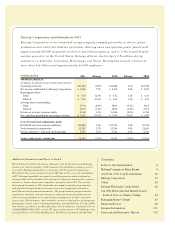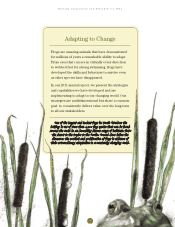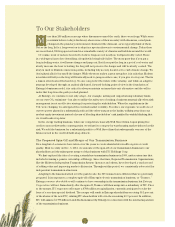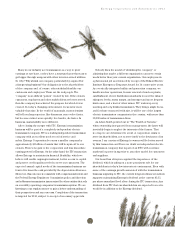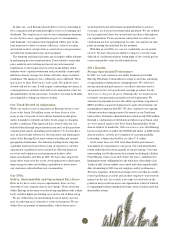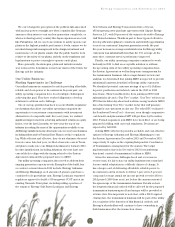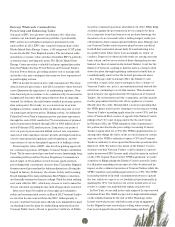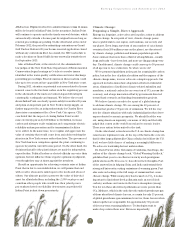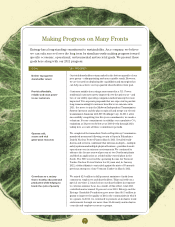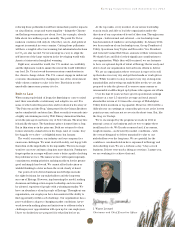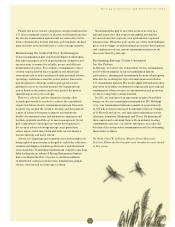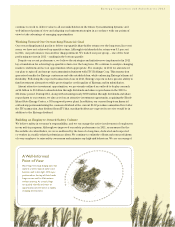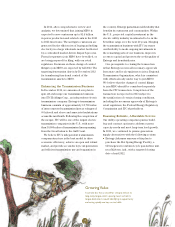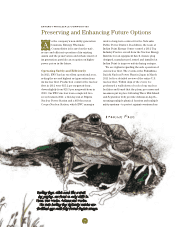Entergy 2011 Annual Report Download - page 12
Download and view the complete annual report
Please find page 12 of the 2011 Entergy annual report below. You can navigate through the pages in the report by either clicking on the pages listed below, or by using the keyword search tool below to find specific information within the annual report.
Transforming Electric Transmission
n 20 years, electric transmission could differ remarkably from the assets and systems we use
today to move power throughout the country. In the future, intelligent, flexible transmission
systems are likely to be required to reliably and securely connect an increasing number of
customers and devices to central and distributed generation sources. Renewables, energy storage and
demand response also may play new or larger roles in grid operations. Yet, given the existing state of
the U.S. electric transmission infrastructure, achieving this type of transmission system represents a
major undertaking.
In the United States, the average date power plants began commercial operation is 1960. The
transmission corridors that connect these plants are more than 50 years old as well. While the transmission
grid has performed remarkably and served customers well over this time, it is clear that significant
investment in new technologies and expanded capacity could be required over the next two decades
to transform the grid to meet the needs of our society. The Electric Power Research Institute estimates
the net investment needed to realize the envisioned power delivery system in the U.S. falls within the
range of $300 billion to $500 billion over the next 20 years.
Driving Investment and Transformation
Many catalysts are driving the need for investment and transformation including load growth, the
addition of variable and intermittent energy generation resources such as wind and solar, increasing
reliability and environmental requirements, security concerns and a restructured electricity marketplace.
Environmental regulations seeking to stabilize CO2 emissions could result in significant investment in
renewable energy sources. For example, renewable portfolio standards or goals have been adopted
in more than 30 of the 50 U.S. states and the District of Columbia, accelerating the share of wind and
solar generation in the power generation market. While we do not believe these types of mandates
are economically efficient, we have consistently advocated for a price signal on CO2 that would also
create demand for cleaner technologies. Under either scenario, the renewable component of generation
would grow, greatly increasing the complexity of grid operations. For example, EPRI estimates that
commercial wind farms could increase the renewable component of generation more than tenfold over
the next 20 to 25 years. If this is the case, transmission system operators would need to adapt their
processes and procedures in significant ways. In addition, substantial transmission investments
could be required due to the disparity between the location of wind resources and population centers.
For example, 53 percent of the U.S. wind resources are in a portion of the Midwest that is home to
only 5 percent of the U.S. population.
In an information-driven digital economy, reliable and secure power is mission-critical. The North
American Electric Reliability Corporation estimates the societal cost of a massive blackout to be on
the order of $10 billion per occurrence. Concerns over cyber security are mounting as the industry
becomes more reliant on the Internet. Additionally, concerns over CO2 emissions are driving the need
for greater transmission efficiencies.
I
OUR POINT OF VIEW
10


